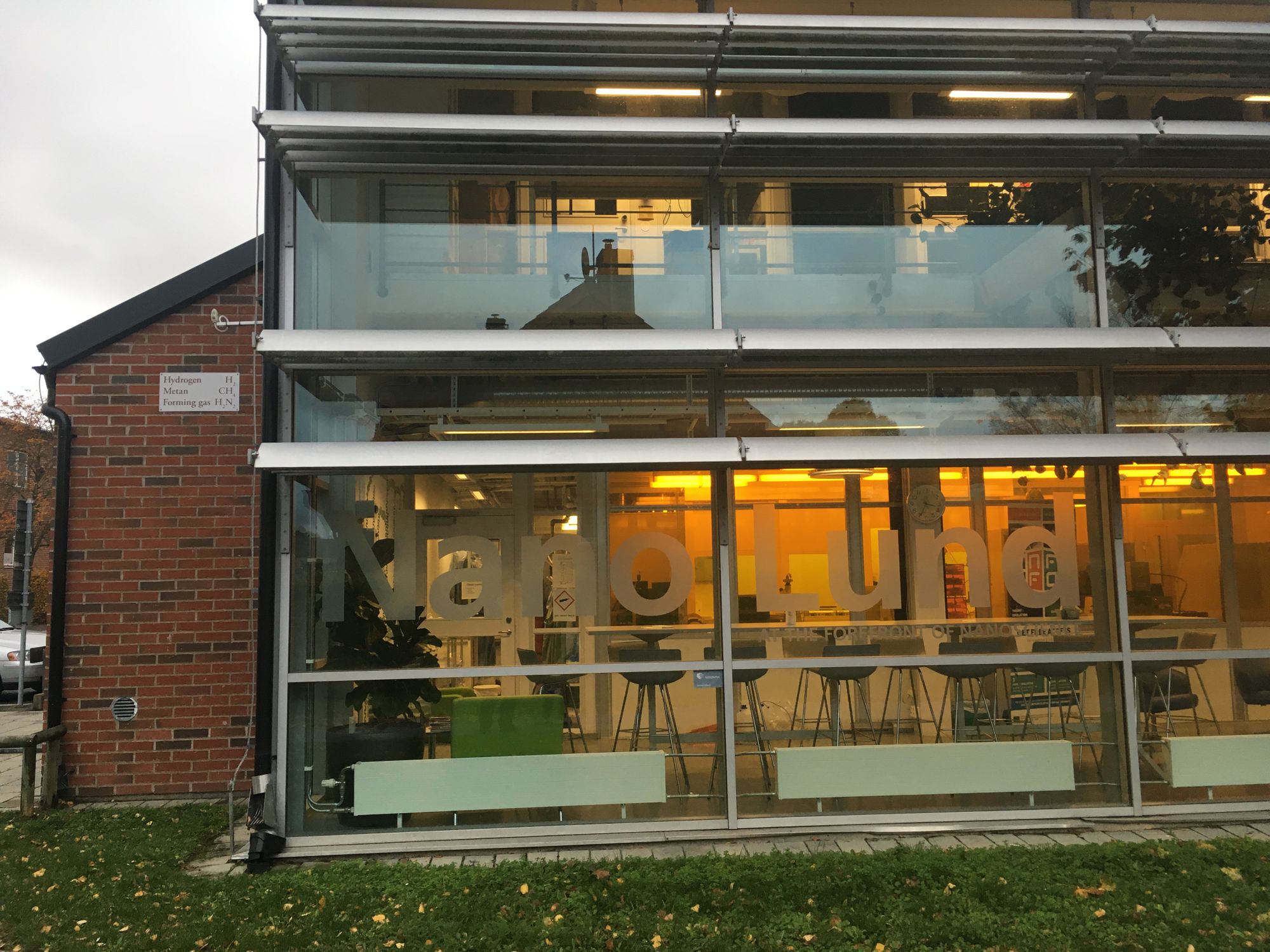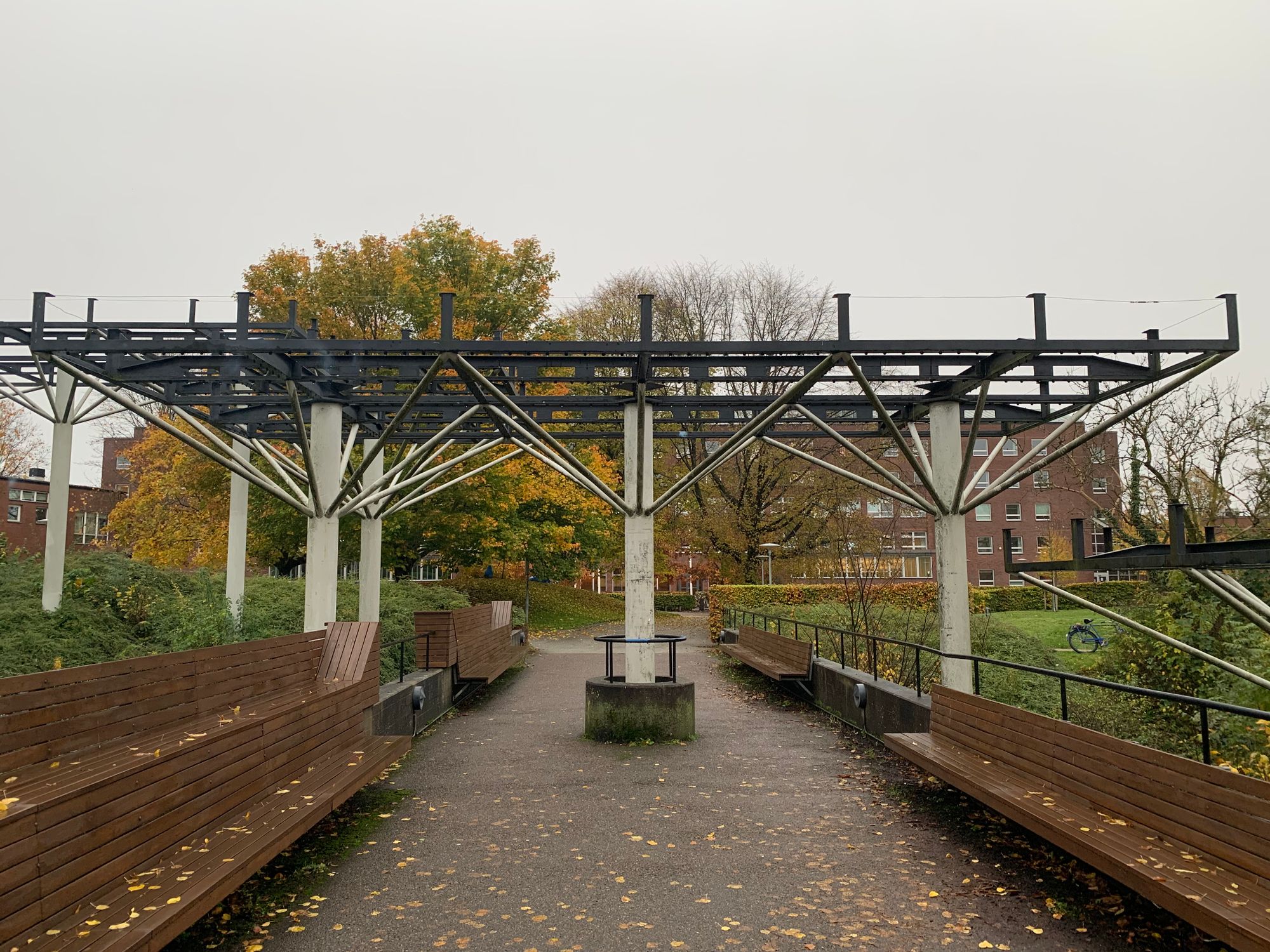On Thursday Mick, Lars-Henrik (L-H) and I met for lunch at the restaurant at Skissernas Museum. We'd had a couple of conversations on Zoom but not met in person. Our plan was to try and review the draft timetable we had prepared as part of our application to Formas, but it was noisy, and Mick had to make a call. Instead L-H and I spoke about renovating a small abandoned cabin (a side project of mine) and how he had been a vegetarian for twenty years and did a lot of cooking at home.
Afterwards we walked up to the LTH part of campus, through 'Professorsgatan' where quiet, leaf-filled streets and elegant homes let you know you are in an expensive part of Lund. LTH stands for Lund Technical Högskola, briefly an independent institute before merging with Lund University in 1969. It now refers to the sprawling Faculty of Engineering that encompasses subjects from architecture and energy science to food, automatic control, immunotechnology and aviation. As we walked, the transition from residential to technical was marked by the appearance of a black modernist box with large windows; its interior was bathed in an alluring egg-yellow light. Mick and I both stopped and marvelled at the 'Nano Lund' sign emblazoned across the window.

We crossed the road, took a short-cut through a car park and there ahead of us was "Matematikhuset"—one of Klas Anshelm's brick clad LTH buildings. Anshelm and Arne Jones' fountain sits on a piece of land between this and "E-huset". E for Elektroteknik. Mick hadn't seen the fountain IRL before. Looking at photographs, he'd thought it looked like a bleak, Soviet-era relic, but it now struck him as more delicate in its proportions. He observed how the dense, scrubby ground cover softened the structure's relationship to its site.

The fountain structure sits between two bodies of water, what I would call ponds. However, Google Maps uses the Swedish term sjö which is closer to "lake". I wanted to show Mick the smaller pond which is much more hidden from view than the large pond. The lowest of the fountain's steel frames–designed to hold glaslådor (glass boxes)–is now enveloped by tall reeds, and you need to follow a small muddy path around the Student Union building to get a glimpse of it.
The two ponds were originally clay pits used for brick manufacturing. I had always thought that the water for the fountain was pumped from the small pond into the tallest column holding the highest glass box. From there, I imagined it cascading into the lower boxes and emptying into the larger pond in a decidedly unidirectional movement: small pond to large pond. Looking down at the still, murky water it was hard to picture the glorious effect of the LTH Fountain reported by those who had seen it in action. In an email, Jan Torsten Ahlstrand had reminded me "There are fountains all over the world but there is only one LTH fountain - a visionary art-technological fountain sculpture!"
The following day, it was Christer Lundgren who pointed out that the water would have flowed in both directions, emptying into both ponds..."like a champagne tower". He laughed and suggested this could be a way to think about the formal logic of the fountain.

